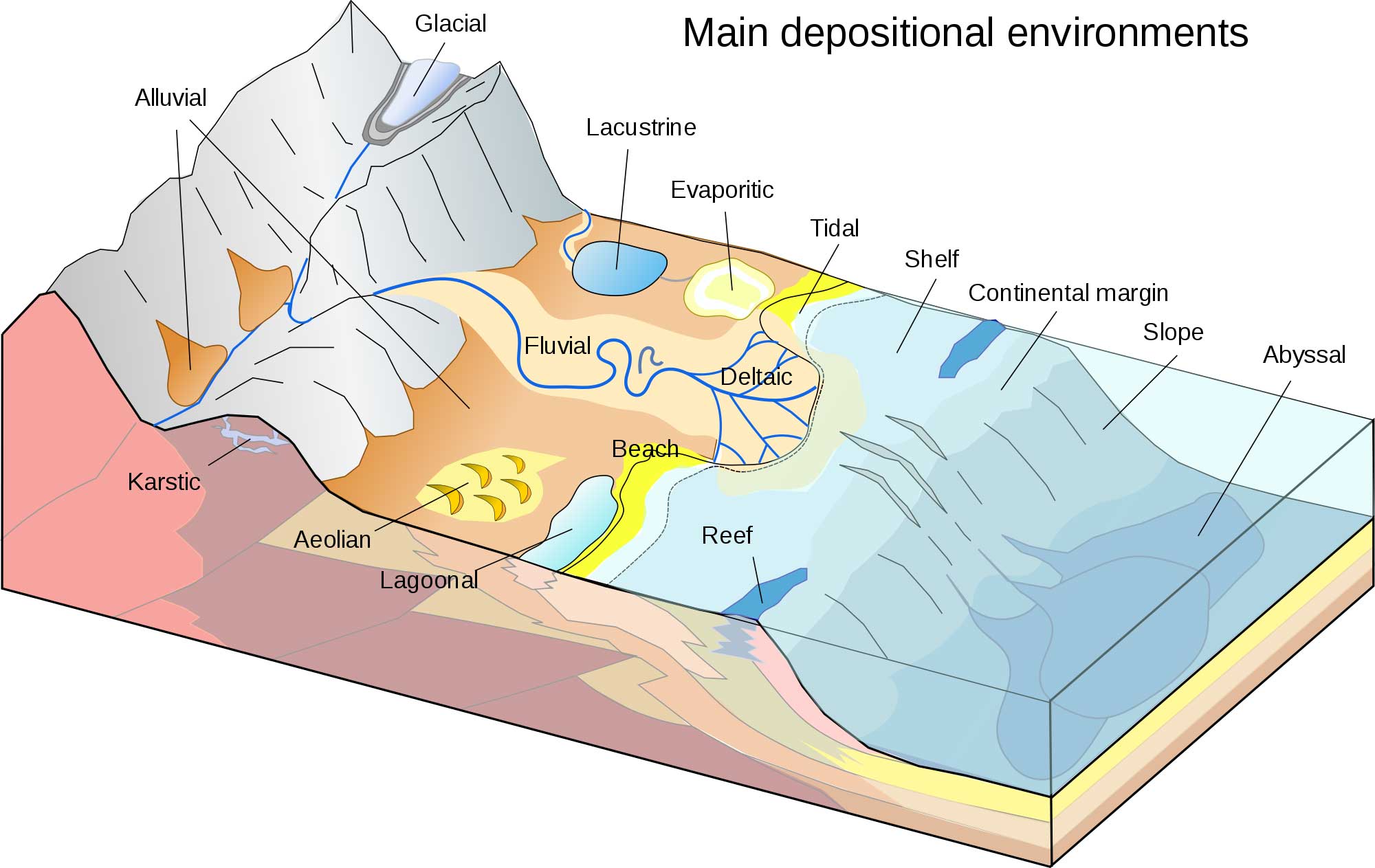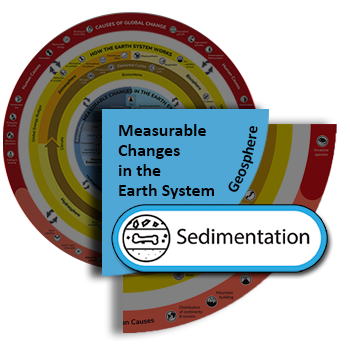Sedimentation is the deposition of rock fragments, soil, organic matter, or dissolved material that has been eroded, that is, has been transported by water, wind, ice, or gravity.

Depositional environments where sediments accumulate. Credit: Wikimedia
A variety of human activities and environmental processes affect: rates of sedimentation, where sediment is deposited, and the nature of the deposited sediment, including:
- Rates of weathering and erosion, which are affected by climatic conditions, such as precipitation rates, snow and ice cover.
- Human land and water use, including deforestation and agricultural activities. For example, the damming of rivers changes where and how much sedimentation occurs, which affects soil quality and causes changes in habitats.
- The size and depth of the bodies of water, such as lakes, rivers, or the ocean, where the sediment is deposited. Slower rates of water flow lead to the deposition of finer grained sediments and to slower rates of deposition.
- Plants and other organisms, such as those that build coral reefs, can trap sediment that otherwise might be deposited elsewhere.
Can you think of additional cause and effect relationships between sedimentation rates and other processes and phenomena in the Earth system?
Visit the weathering, erosion, and soil quality pages to explore more connections between the rock cycle and global change processes and phenomena.
